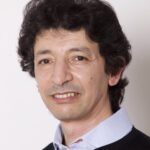Link to Pubmed [PMID] – 34039936
Link to HAL – pasteur-03922063
Link to DOI – 10.1097/AUD.0000000000001066
Ear & Hearing, 2022, 43 (1), pp.1-8. ⟨10.1097/AUD.0000000000001066⟩
Usher syndrome (USH) encompasses a group of clinically and genetically heterogenous disorders defined by the triad of sensorineural hearing loss (SNHL), vestibular dysfunction, and vision loss. USH is the most common cause of deaf blindness. USH is divided clinically into three subtypes—USH1, USH2, and USH3—based on symptom severity, progression, and age of onset. The underlying genetics of these USH forms are, however, significantly more complex, with over a dozen genes linked to the three primary clinical subtypes and other atypical USH phenotypes. Several of these genes are associated with other deaf-blindness syndromes that share significant clinical overlap with USH, pointing to the limits of a clinically based classification system. The genotype-phenotype relationships among USH forms also may vary significantly based on the location and type of mutation in the gene of interest. Understanding these genotype-phenotype relationships and associated natural disease histories is necessary for the successful development and application of gene-based therapies and precision medicine approaches to USH. Currently, the state of knowledge varies widely depending on the gene of interest. Recent studies utilizing next-generation sequencing technology have expanded the list of known pathogenic mutations in USH genes, identified new genes associated with USH-like phenotypes, and proposed algorithms to predict the phenotypic effects of specific categories of allelic variants. Further work is required to validate USH gene causality, and better define USH genotype-phenotype relationships and disease natural histories—particularly for rare mutations—to lay the groundwork for the future of USH treatment.

